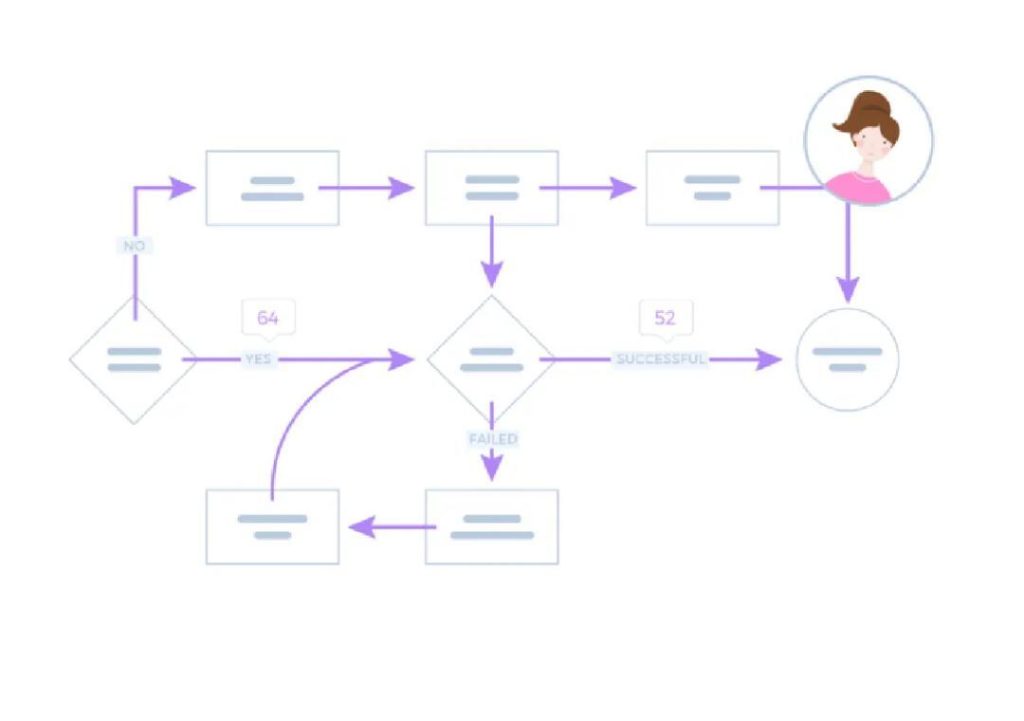
Distinguishing User Journey from User Flow: Unlocking Intuitive Designs
In the world of user experience (UX) design, understanding user behavior is crucial to creating effective and intuitive digital products. Two essential tools that help UX designers achieve this are user journey maps and user flows. While they may seem similar, distinguishing between these two concepts is vital to gain a deeper understanding of user behavior and enhance product usability.
What is a User Journey Map?
A user journey map is a visual representation of the overall customer experience, depicting the entire process a user goes through when interacting with a digital product. It’s a high-level view that showcases the emotional and psychological aspects of the user’s experience, including their thoughts, feelings, and pain points. A user journey map typically includes:
- User personas: Representing the diverse range of users who interact with the product.
- User goals: The objectives users aim to achieve when using the product.
- User touchpoints: The various points of interaction between the user and the product.
- User pain points: The areas where users experience frustration or difficulties.
- User emotions: The emotional responses users exhibit during their interaction with the product.
What is a User Flow?
A user flow, on the other hand, is a detailed, step-by-step representation of a specific path a user takes to complete a task or achieve a goal. It highlights the user’s actions, decisions, and interactions with the product as they move through a specific process. A user flow typically includes:
- Tasks: The specific actions users take to complete a goal.
- Decision points: The points where users make choices or decisions.
- Interaction points: The areas where users interact with the product.
- Feedback loops: The points where users receive feedback or responses from the product.
Key Differences
While both user journey maps and user flows are essential tools in UX design, they serve distinct purposes and offer unique insights:
- Scope: User journey maps cover the entire customer experience, while user flows focus on specific tasks or processes.
- Level of detail: User journey maps provide a high-level overview, while user flows offer a more detailed, step-by-step analysis.
- Purpose: User journey maps help designers understand the overall customer experience and identify areas for improvement, while user flows aid in optimizing specific tasks and processes.
Combining User Journeys and Flows
To gain a comprehensive understanding of user behavior and create intuitive designs, it’s essential to combine user journey maps and user flows. By integrating these two tools, designers can:
- Identify areas for improvement: User journey maps highlight pain points and areas for improvement, while user flows provide actionable insights for optimizing specific tasks.
- Refine user flows: User journey maps help designers identify the most critical user flows, allowing them to focus on optimizing the most impactful processes.
- Enhance user experience: By considering both the overall customer experience and specific task completion processes, designers can create products that are both intuitive and effective.
Real-World Applications
In practice, combining user journey maps and user flows can be applied in various ways:
- Designing complex systems: By creating user flows for specific tasks within a larger system, designers can break down complex processes into manageable components.
- Improving customer support: User flows can help designers identify areas where customers experience frustration, allowing for targeted improvements to customer support processes.
- Enhancing product onboarding: User flows can guide designers in creating intuitive onboarding processes, ensuring that new users can quickly and easily get started with the product.
Conclusion
In conclusion, understanding the differences between user journey maps and user flows is crucial for creating effective and intuitive digital products. By combining these two tools, designers can gain a deeper understanding of user behavior, identify areas for improvement, and enhance product usability across digital platforms. By recognizing the unique strengths and purposes of each tool, designers can unlock the full potential of user-centered design and create products that meet the evolving needs of their users.
Source:
https://www.growthjockey.com/blogs/know-the-difference-between-user-journey-and-user-flow






